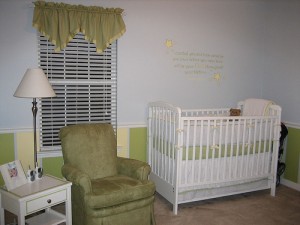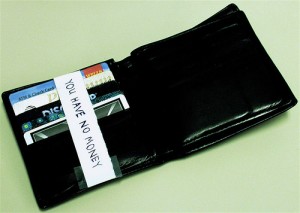 I’ll be 19 weeks pregnant tomorrow. That’s halfway to full term. I’ll also be finding out the sex of the baby if he or she cooperates (fingers crossed). We could be moving to our new place as soon as this Saturday. Which means I’m out of excuses. It’s time to start shopping for baby stuff.
I’ll be 19 weeks pregnant tomorrow. That’s halfway to full term. I’ll also be finding out the sex of the baby if he or she cooperates (fingers crossed). We could be moving to our new place as soon as this Saturday. Which means I’m out of excuses. It’s time to start shopping for baby stuff.
Yes, we have friends and family who will likely want to gift us with various baby items that we’ll need. But the last thing I want to do is exploit anyone’s generosity. Furthermore, our families just aren’t very big, and money is tight for everyone right now. Ultimately, the responsibility to provide for this baby is ours, and we’re trying to do it as frugally as possible.
Over the weekend, I started researching cribs and car seats and various other musts for the baby. I found some pretty incredible deals on cribs at Wal-Mart. This one was particularly compelling, and I really liked this one, too. (No one is paying me to stay that, either.)
I checked out the specifications. Both of these cribs meet safety standards dictated by the Consumer Product Safety Commission for cribs. They do not feature drop sides as many of those models have been recalled due to the safety concerns. There’s no reason to believe that these cribs are any less safe than the fancy ones that retail for $500-$600. So why do I feel guilty for considering a basic crib for my baby?
I know that this baby isn’t going to care if the crib has a fancy finish or if it scratches easily. I certainly don’t care about those things. I just want to make sure that the baby has a safe place to sleep, and I want to choose a crib that complies with all of the current safety standards. These cribs do at a fraction of the price of fancier models. And honestly, when it comes to recalls and possible problems, expense doesn’t seem to be an issue. Even the most expensive cribs can be recalled.
Over and over I’ve read about how having a baby doesn’t have to be expensive. And I don’t believe that it does. But as parents, especially first-time parents, we face an overwhelming amount of pressure to spend a lot of money for the baby, and we feel guilt for attempting to cut costs. But why? After all, I don’t believe the baby will be happier in an overpriced crib if it means we have less money to provide other necessities, like a place to live or health insurance.
I’ve realized that shopping for the baby is going to be a intricate balancing act. For things like cribs and car seats, safety is my top priority. If I can’t find a car seat with high safety ratings at a low price, then I’ll have to spend the extra money. But safety is my only concern. If I can find an off-brand item that’s just as safe for a lower price, I’m not going to feel guilty about it.
The consumer culture constantly pushes us to believe that more expensive is better. Sometimes that’s true, but not always. We have to be smart consumers, and we have to learn to balance price with quality. I’m not going to spend twice as much for some unnecessary bells and whistles if I can find a product that will do the same job for half the price.
Of course, as a new mom, that’s easier said than done.





